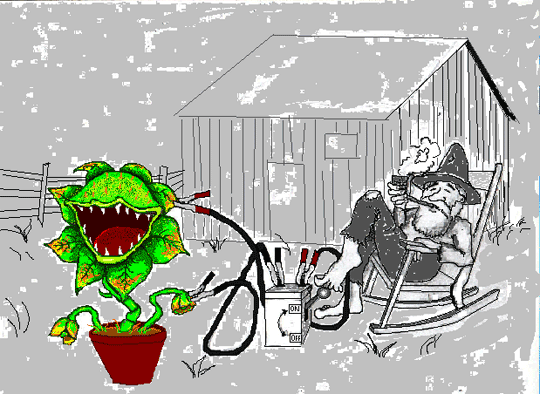Genes Switches
Genes contain the
“instructions” that determine the structure and function of all
living tissues. Each gene or combination of genes, produce proteins
that form tissues that carry out these specific functions. Not all
genes continuously produce their proteins. Promoters can
enhance the production of certain proteins, and promoters can be
told when they should promote protein production by regulator
genes. Regulator genes, in their most simplistic form, may be
thought of as gene switches that can turn genes on and off, and in
some cases, turn genes on and off by external stimuli. There are
commercial products that can turn genes on, but not
quite like the illustration shows.

SAR’s
When a pathogen
attacks a plant, the plant reacts to survive. Gene switches are
turned on to produce proteins that in some way help the plant to
defend itself against the attack. In other words, the plant turns
on a defense mechanism. When a plant turns on its defense mechanism
in every part of the plant, in response to a chemical or pathogen,
it’s known as a Systemic Acquired Resistance by the plant or SAR.
There are several commercial chemical sprays that will turn on genes
in a plant, producing a Systemic Acquired Resistance to disease.
One of these chemicals, is a product put out by
Syngenta Crop
Protection called
Actigard. Actigard
does not directly affect disease causing organisms, it only
activates defense mechanisms in the plant, that help it resist
attack by these organisms
ISR’s
When plant defense
mechanisms are induced by a microorganism that does not cause
disease, it is referred to an Induced Systemic Resistance or ISR.
Bayer Crop Science
puts out an ISR seed treatment called
Yield Shield.
Yield Shield
is a bacterial seed treatment (Bacillus pumilus GB34) that, again,
does not directly attack disease causing organisms. It turns on
gene switches in the plant, which start the plants defense
mechanisms, which help the plant resist attack.
Now let your
imagination go.
OK… We see that it
is possible to turn on genes by application of chemicals or friendly
bacteria. Can we use chemicals or friendly bacteria to turn on
other genes to help the plant? How about the use of other external
stimuli to turn on genes? Is there a way to make genes turn on only
at a certain temperature?, or maybe at a certain plant age?, or
maybe only during times of drought?
Time will tell.
Next time we’ll talk about “Pelleting Seed in a Rotary Coater…A New
Trend”.
Hope to see you then.